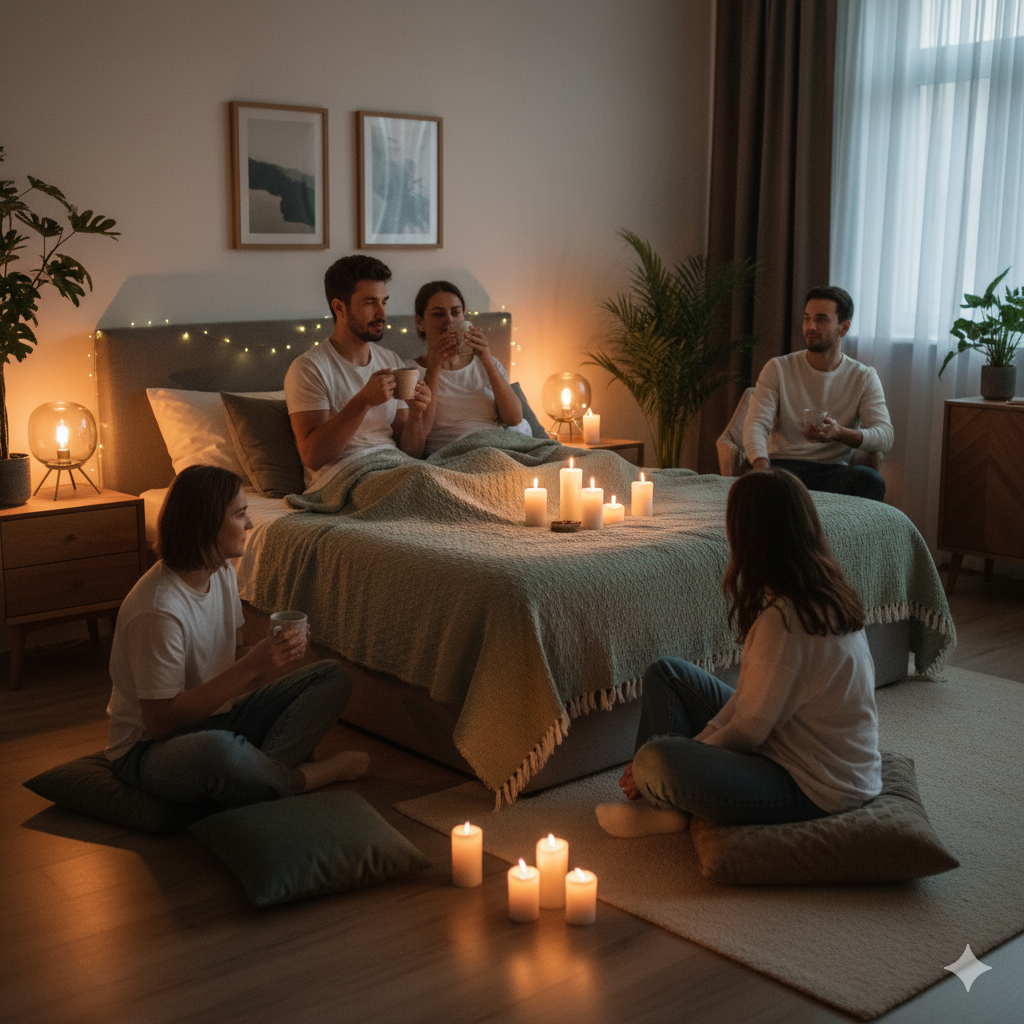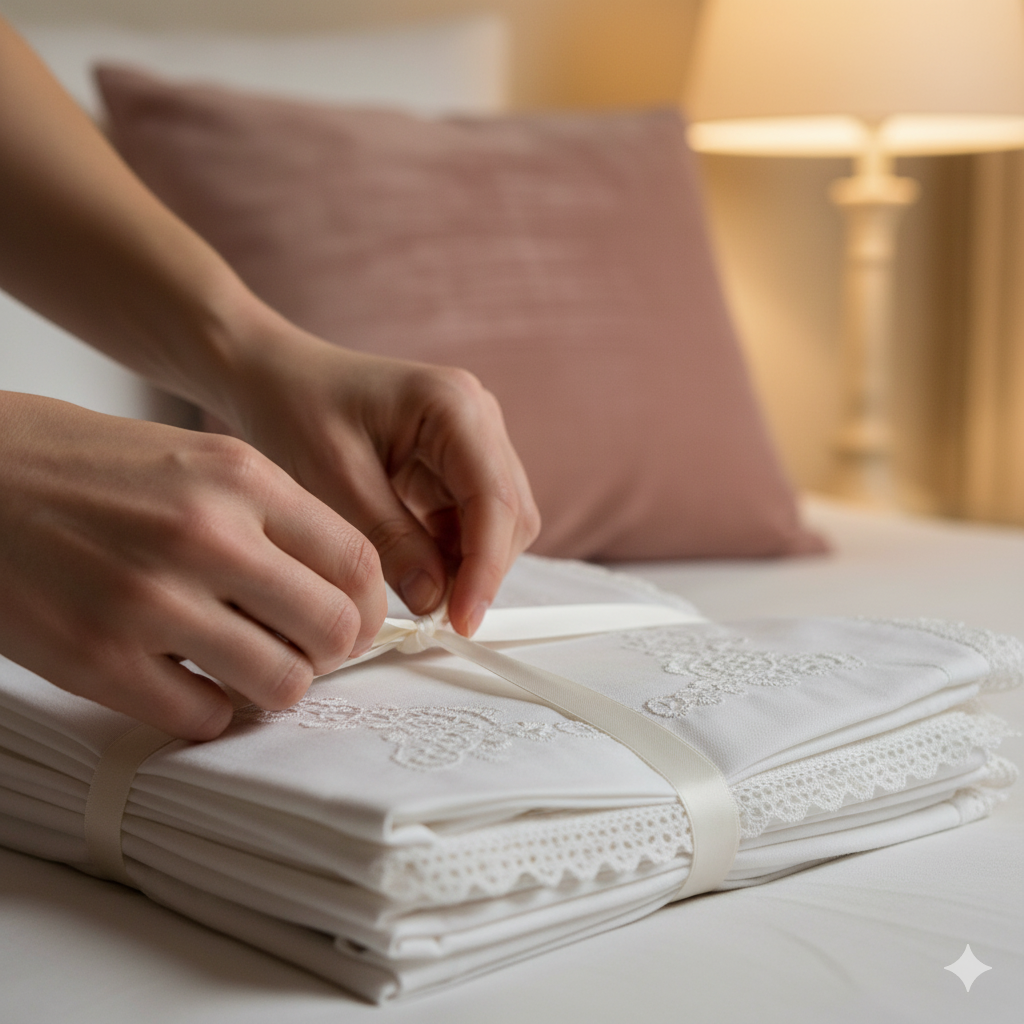The Bedding Ceremony: 7 Traditions and Modern Meanings
The Bedding Ceremony was a public way for communities to bless, witness, and legitimize a marriage. From medieval Europe to Jewish and Scottish customs, this marriage bedding ritual still fascinates—and it inspires thoughtful, modern reinterpretations focused on intimacy, respect, and shared values. For context, see our historical accuracy guide.
Key Takeaways: The Bedding Ceremony
- The Bedding Ceremony symbolized a community’s blessing of a marriage’s union and consummation.
- Traditions across Europe, Scotland, and Judaism reveal different cultural views on privacy, legitimacy, and intimacy.
- Modern couples adapt the idea into private, meaningful rituals—without public spectacle.
- Understanding The Bedding Ceremony clarifies how ideas about love, dignity, and home life have evolved.

Unveiling The Bedding Ceremony
In short: The Bedding Ceremony publicly affirmed a marriage, blending blessing, symbolism, and witness. It joined private union to public meaning.
Imagine a candlelit room, family offering gentle wishes as the couple is escorted to their bed. For earlier societies, this was less spectacle and more statement: the union mattered to everyone, not only the couple. By ritualizing the moment, communities communicated care, legitimacy, and continuity.
As we examine The Bedding Ceremony, we see how processions, prayers, and small gestures once honored fertility, intimacy, and social bonds—roles modern partners now fulfill in quieter ways.

The Origins of The Bedding Ceremony
In short: In medieval Europe, witness and (in some contexts) consummation validated marriage in faith, law, and community—especially for inheritance and social order.
Among the nobility, the ritual reinforced dynastic continuity and the potential for heirs. For commoners, it publicly recognized a new household and its place within the village or town. Religious blessings often framed the moment, asking for prosperity and harmony.
Many communities hosted a lively procession from feast to bedchamber. While details differed by region and era, the heart of the custom stayed constant: the couple’s private bond carried public significance.

Variations Across Cultures
In short: Recognition was communal, but expressions varied—from public symbolism to private intimacy.
Just as bed designs from around the world reflect cultural values, bedding rituals communicated what mattered most: dignity, family bonds, or the couple’s privacy. Three frequently discussed examples include:
- Medieval Europe
- Tradition: Public bedding and blessing. Focus: Legitimacy, witness, and community continuity.
- Jewish Weddings (Yichud)
- Tradition: A brief, private seclusion immediately after the ceremony. Focus: Emotional intimacy and the couple’s first quiet moment together.
- Scottish Weddings
- Tradition: Festive customs that emphasized partnership and participation (e.g., playful rituals in some regions). Focus: Shared effort and communal support for the new union.

The Decline of The Bedding Ceremony
In short: Growing respect for privacy and changing ideas about love moved intimacy behind closed doors.
- Privacy: Societies increasingly valued personal dignity and private space, reducing public rituals of intimacy; see why public ceremonies faded.
- Romantic Love: Marriages became more partner-centered rather than alliance-centered.
- Legal Shifts: Laws and social norms elevated consent, autonomy, and private life.
Modern Interpretations (Updated 2025)
In short: Couples honor the spirit—connection and gratitude—without the spectacle.
Today’s versions are simple, respectful, and deeply personal. Some partners share a private toast after the reception, exchange letters, or practice a grounding ritual of gratitude that marks the start of married life. According to the Sleep Foundation, shared bedtime routines support connection and well-being—echoing the ceremony’s original intent to nurture intimacy and care.
- A quiet toast in the suite after guests depart
- Exchanging handwritten vows or letters for a private keepsake
- A short “wind-down” ritual—lights low, calm music, a mindful check-in before sleep

From Public Ritual to Private Bedroom: Practical Tips
In short: Personalize meaning—don’t reenact history. Choose rituals you’ll actually cherish.
Start with research to understand origins and to avoid uncomfortable reenactments. Then adapt the spirit of blessing, gratitude, and unity to your values. If home design helps you relax, our modern bed types guide shows how evolving styles support comfort and connection.
- Research thoughtfully: Learn enough history to adapt with respect.
- Customize your moment: A private toast, letter exchange, or quiet reflection can be more meaningful than a staged display.
- Design for calm: A restful environment can make your first night together truly restorative.
Buyer’s Guide for a Calmer Night (Optional Modern Adaptation)
In short: If you’re creating a peaceful “first-night” ritual, build a soothing sleep environment with thoughtful materials and mindful routines.
A gentle, unhurried wind-down ritual does wonders for connection. Consider breathable sheets and natural textures; many couples like to align the bedroom with wellness goals. If that’s you, prioritize low-VOC furnishings and materials that feel great on skin. (For inspiration, see Sleep Foundation’s guidance on the bedroom environment and Parachute’s practical design stories on the Parachute Home blog.)
Tip: choose bedding that supports temperature regulation, smooth feel, and easy care. Natural fibers and quality construction encourage better rest on an emotional night—without distracting you from the moment.

Literary and Cinematic Portrayals
In short: Novels and shows amplify drama around the ceremony, often mixing fact and fiction.
Popular culture—think sweeping historical sagas—leans into high emotion to explore power, vulnerability, and community. If you love this lens, we break down what’s plausible (and what’s entertainment) in our guide to portrayals of The Bedding Ceremony.
The Legacy of The Bedding Ceremony
In short: The ceremony spotlighted a truth that still holds: marriages intertwine private love with public life.
Today, most couples choose privacy. Yet the impulse to bless, to be witnessed, and to feel supported remains strong—now expressed through toasts, speeches, and intimate traditions that suit the couple’s comfort. The legacy is less about a bed and more about belonging.
FAQ: The Bedding Ceremony
- What was the purpose of The Bedding Ceremony?
- It publicly acknowledged the union (and, in some eras, consummation), reinforcing legitimacy, blessing, and community witness.
- Is The Bedding Ceremony still practiced today?
- Not in its historic form. Couples often adapt its spirit into private, meaningful rituals that emphasize care and connection.
- What is Yichud in Jewish weddings?
- Yichud is a brief, private retreat for the newly married couple immediately after the ceremony, emphasizing intimacy and togetherness.
- How can modern weddings honor old traditions respectfully?
- Research origins, choose values-aligned elements, and keep intimacy private—think a shared toast, letter exchange, or calm wind-down routine.
- How do bedroom choices support a modern “ceremony” moment?
- Design for calm: soothing lighting, breathable bedding, and clutter-free surfaces help the moment feel intentional and restorative.
Final Thoughts
While The Bedding Ceremony belongs to the past, its themes—intimacy, unity, and community—remain deeply relevant. At Cozy Bed Quarters, we help couples shape bedrooms and rituals that support connection. Whether you’re exploring thoughtful design or adapting tradition with care, we’re here with guidance, ideas, and resources.
Related Reading from Cozy Bed Quarters
- Exploring Modern Bed Types: A Comprehensive Guide
- The Historical Accuracy of Medieval Bedding Ceremonies
- Traditions Transformed: The Disappearance of Bedding Ceremonies
Other Reading We Recommend

